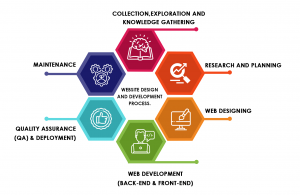Are you planning to create a website for your business or personal brand? If yes, you must know about the website development process. It’s a series of steps that web developers follow to build a website from scratch. In this guide, we’ll cover the website development process in 2023, the latest trends, and best practices.
Step 1: Planning
Before starting website development, you need to plan your website’s design, content, and functionality. Determine your target audience, goals, and objectives. Research your competitors and analyze their websites.
Step 2: Design
The design phase includes creating wireframes and mockups of your website’s layout, color scheme, typography, and imagery. You can use design tools like Adobe XD, Sketch, or Figma to create your website’s design.
Step 3: Content Creation
Content is a crucial element of your website. You need to create high-quality content that resonates with your target audience. Use SEO techniques to optimize your content for search engines.
Step 4: Development
The development phase involves coding your website’s front-end and back-end. You can use programming languages like HTML, CSS, JavaScript, PHP, and Python to build your website.
Step 5: Testing
Testing is an essential part of the website development process. You need to test your website’s functionality, compatibility, and performance on different devices and browsers. Use tools like Google Lighthouse, BrowserStack, or CrossBrowserTesting for testing.
Step 6: Deployment
Once you’ve tested your website and fixed all the bugs and errors, you’re ready to deploy it. You can host your website on a web server or a cloud platform like AWS, Google Cloud, or Microsoft Azure.
Conclusion
Creating a website is a complex process that requires careful planning, design, development, and testing. By following the website development process, you can build a website that meets your business objectives and engages your target audience. Keep up with the latest trends and best practices to stay ahead of the competition.


